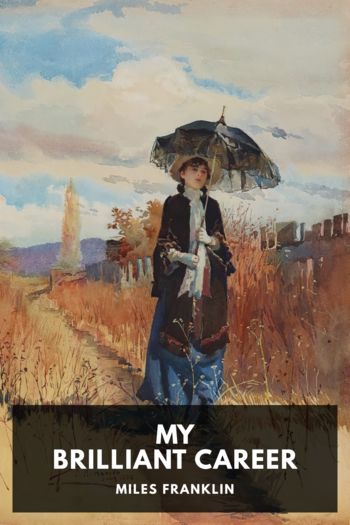Master of His Fate by James Tobin (books to read for teens .TXT) 📕

Read free book «Master of His Fate by James Tobin (books to read for teens .TXT) 📕» - read online or download for free at americanlibrarybooks.com
- Author: James Tobin
Read book online «Master of His Fate by James Tobin (books to read for teens .TXT) 📕». Author - James Tobin
When Roosevelt’s injured leg had healed, he returned to Warm Springs—the official new name taken by Bullochville—and got straight to work. With the pool to himself all morning long, he alternated periods of exercise and sunbathing. He had a table placed in the water about a foot below the surface. Here he could sit and make his legs move this way and that. His optimism flowed back.
He had been at the resort for only a couple of days when a message arrived. A polio survivor had just been helped off the train from Atlanta. She said her name was Thelma Steiger. She was from Missouri. She wanted to know where to find the healing waters.
There was a young man at the station, too—one Lambert Hershheimer, from Falmouth Heights, Massachusetts. He asked the same question.
FDR and Tom Loyless looked at each other. Both had been getting letters from people like this, people who had polio or their parents, who wanted to know: If they came to Warm Springs, could they be cured?
All the letter-writers had read Cleburne Gregory’s newspaper story, with its glowing optimism about Warm Springs. Now, with the coming of spring, a few of them, in their search for a cure, had simply boarded trains bound for Georgia. And here they were.
Where would they sleep? FDR was staying in one of the few nice cottages at the resort, lent to him by the owners. But the Meriwether Inn was a falling-down disaster. Most of the resort’s cottages had no heat or running water. Even the nicest and biggest was so dilapidated that FDR called the place “the Wreck.” And of course there was no staff to see to the special needs of disabled people, let alone to help them get better.
So Roosevelt and Loyless had been writing back to say they were very sorry but they couldn’t help—not now, anyway.
But here were these people at the railroad station, with desperate hopes and no place to stay.
FDR and Loyless asked around in the village and found a couple of homeowners who agreed to house the visitors.
The next day’s train brought a young man from Pennsylvania who looked more like a scarecrow than a man. He had made the trip in the baggage car, sitting in his wheelchair among three sacks of mail, some chicken crates, and a coffin. His brother had come along to help him.
The man in the wheelchair was named Fred Botts. He had come down with infantile paralysis in the epidemic of 1916 and never taken another step. For nine years he had been cooped up in his parents’ house, dwindling to skin and bones. Then his father noticed the story about FDR and Warm Springs in the local newspaper. Botts had once hoped to become an opera singer and still had his lovely baritone voice, so his family arranged for him to perform at their church for friends who donated money to hear him sing, and he used the money to buy train tickets to Georgia. He was so emaciated that FDR thought he looked like he was in the late stages of tuberculosis, often called “consumption” because it seemed to consume the body pound by pound.
Over the next few days more people with arms and legs damaged by “infantile” trickled into town.
FDR was there to work on his own recovery. He had neither the time nor, to be honest, the proper professional training to help these strangers.
But their need, so like his own, spoke to him. Perhaps he could do something for them. After all, he had spent many hours in conversation with the nation’s leading experts in after-polio treatments, and he had his own ideas, based on intensive personal experience, about which treatments worked best.
So one by one, he began to quiz the newcomers about their cases, and he sized up the strength left in their limbs.
Some were better off than he—a teenaged girl from Boston who could walk with only one brace, for instance, and a nineteen-year-old boy from Alabama who could walk well with crutches. Some were worse off. Fred Botts, with “practically nothing below the hips,” was one of those. Mrs. Steiger from Missouri was in the same boat. FDR thought a man in his thirties named Rogers, from Wisconsin, had hurt his early chances of recovery by returning to work only three weeks after contracting the disease. “He had made up his mind that nothing could ever be done,” FDR said, but now Rogers had grasped at one last straw by traveling to Warm Springs.
FDR and Tom Loyless asked a few people from the village to help with pushing wheelchairs and getting people in and out of the pool. They spoke frankly to the visitors. There was no staff of doctors and nurses here, they said. Together, they would all have to be their own doctors. Then they got into the pool, and Franklin Roosevelt began to teach them the exercises he had learned from Kathleen Lake and Wilhelmine Wright.
From the moment Fred Botts was lowered in, he was delighted.
“The water was of the most pleasing temperature,” he remembered later, “not so cold that it would chill a person, nor so warm that it would enervate.” He had not been able to move by himself in nine years. Now, with inner tubes keeping him upright, “I paddled around with my hands and was surprised with what little ease I could move my legs … The gentle caress of the water





Comments (0)